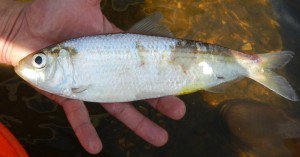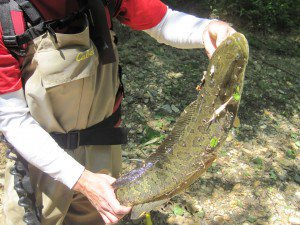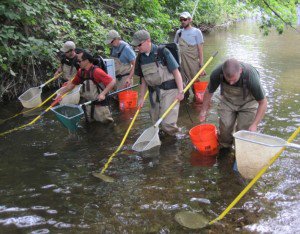The Anacostia Watershed has suffered hundreds of years of environmental neglect and lost forest and wetland habitat due to agriculture and development. The Watershed is highly urbanized and experiences water runoff from roads parking lots buildings and other paved-over surfaces. This runoff and debris in addition to polluting the river also warms the water and adversely affects the aquatic life in this freshwater system.
In recent years area leaders have stepped up efforts to restore the Anacostia Watershed which will result in a healthier environment and better recreational opportunities for area residents. The restoration will also support economic development and new investments occurring along the tidal river an 8.4 mile long section from Approximately the DC and Maryland border to the Potomac River.
Testing the Waters
The Council of Governments has helped lead efforts for three decades to clean the Anacostia watershed and restore water and wetlands. COG provides the forum for its member jurisdictions to meet and cooperatively discuss various watershed restoration approaches.
Phong Trieu an 18-year veteran of the Anacostia Restoration Team and Principal Planner of COG’s Department of Environmental Programs literally gets into the weeds…and the water in his efforts to study the river’s health. “Through our technical expertise COG provides various services such as documenting the existing aquatic conditions of small watershed or stream section” said Trieu. These conditions are best examined by studying those who inhabit the water: the fish.
According to Trieu “There have been as many as 50 different kinds of fish in the Anacostia River watershed. What is often overlooked in this highly-urbanized watershed is that there are still fish which are associated with clean or high water quality conditions such as the brown trout and the least brook lamprey.”
“There have been as many as 50 different kinds of fish in the Anacostia River watershed. What is often overlooked in this highly-urbanized watershed is that there are still fish which are associated with clean or high water quality conditions such as the brown trout and the least brook lamprey.”
Trieu and his team of environmental scientists investigate the fish in person. They perform electrofishing surveys a professional technique that stuns fish for a few seconds. Once collected they identify count weigh and sometimes determine the sex of the fish. Studying their attributes and testing the water allows COG’s scientists to track rates of growth and any abnormalities the fish may have from pollution. Trieu notes that electrofishing which is highly methodical does not harm the fish involved.
Red fish blue fish
In his decades of wading Trieu has seen some peculiar and telling non-native species in the many sub-branches of the river. “I’ve found a dead piranha native to South America on the banks of Indian Creek a live tilapia native to Africa in Little Paint Branch and four $100 dollar bills native to the US Treasury in a wallet in Takoma Branch.”
Adventures in non-native species aside many native fish still struggle to thrive in their home waters. Like west coast salmon “schools of adult herring and shad return from the ocean move into our streams every spring” Trieu accounts yet “the 2004-2013 herring schools demonstrate an all-time low in the Anacostia.” Indeed the much larger and more famous of the National Capital Region’s waterways the Potomac has experienced a major decline: in its peak years in the 1960s close to 11 million pounds of herring were caught in the river per year. By 2010 a year’s intake was 1600 pounds.
Though having fish at all in these stream waters is a positive bellwether of water quality fish consumption advisories continue to alert fisherman how much fish they can consume safely.
Progress Through Partnerships
The Anacostia Watershed Restoration Partnership  a regional organization based at COG is putting into place an array of projects that will improve existing stream conditions such as stormwater management that limit runoff stream restoration to improve fish habitat conditions and reforestation projects along stream valley corridor to provides the natural shade and cover over the streams. In addition to Trieu’s work a myriad of related projects are supported by extensive data collection. Together these projects are helping restore a watershed that’s critical to the region’s long-term sustainability and prosperity.
a regional organization based at COG is putting into place an array of projects that will improve existing stream conditions such as stormwater management that limit runoff stream restoration to improve fish habitat conditions and reforestation projects along stream valley corridor to provides the natural shade and cover over the streams. In addition to Trieu’s work a myriad of related projects are supported by extensive data collection. Together these projects are helping restore a watershed that’s critical to the region’s long-term sustainability and prosperity.
For more information on the Partnership its Anacostia River Watershed Restoration Plan or to view maps of the watershed visit anacostia.net